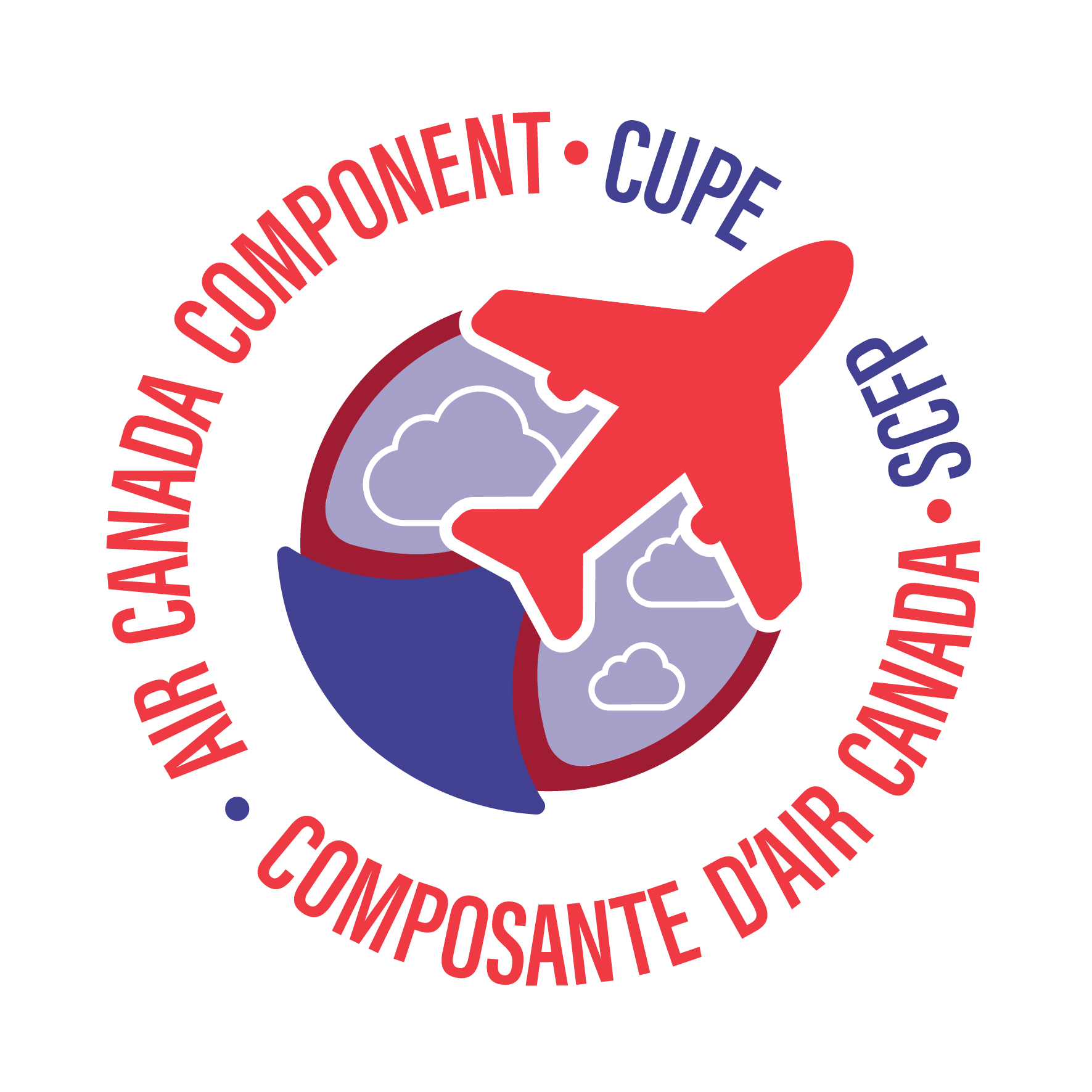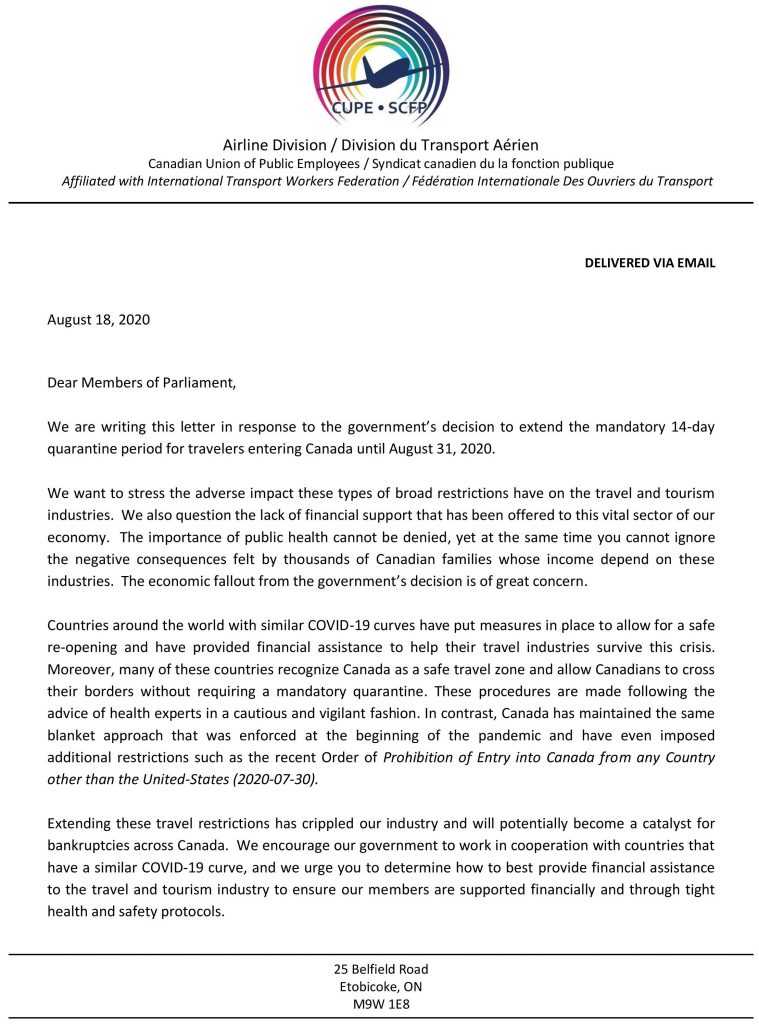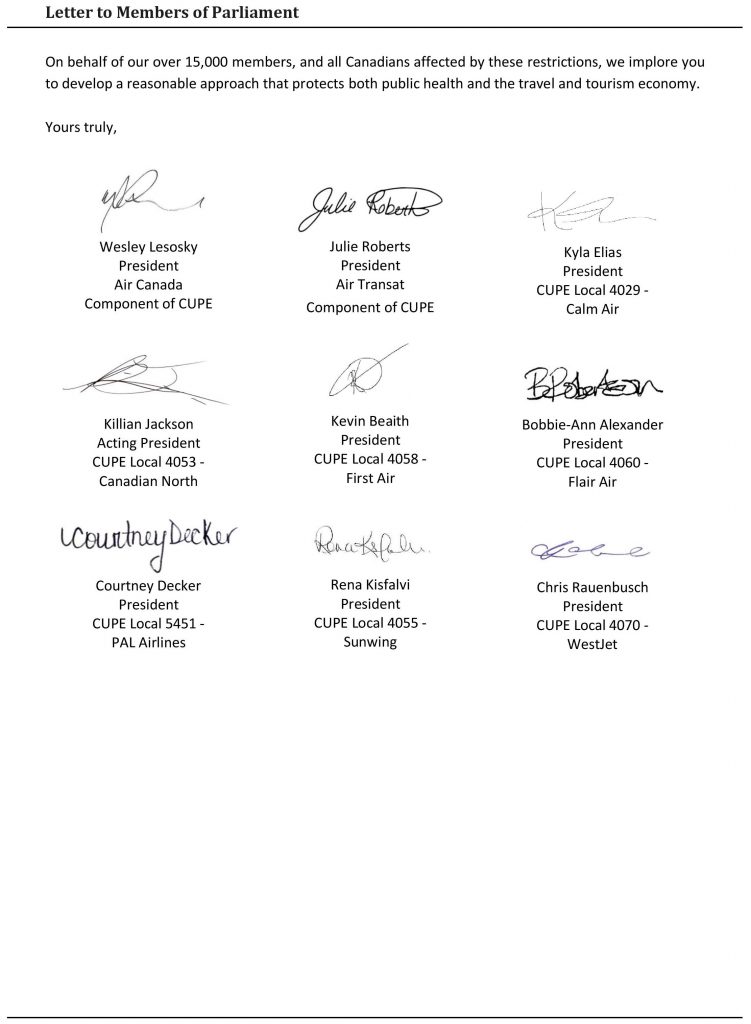RBP Pension Bulletin – August 2020
(This applies to Air Canada Mainline only)
Pension information regarding the 8 month Reduced Block Program as per LOU 25:
Bidding for the reduced block program offered yearly as per LOU 25 of the Collective Agreement opens on August 19, 2020, at 8:00 EDT and closes on September 2, 2020, at 8:00 EDT. Award results will be available on September 11, 2020, at 17:00 EDT.
For your convenience, a copy of the relevant article, as well as important pension buy-back information, is posted on acaeronet and is available via the globe Information System under Tools & References > Crew Scheduling & Planning > Reduced Block Program Information > Reduced Block Program Under LOU 25/2020-2021 Reduced Block Pension Buy Back Formula (respectively). Please note that an updated document has been posted.
Members applying for the Reduced Block Program are required to select Option 1 or Option 2 regarding their pension for the duration of the program. The following information and definitions are provided to assist you with understanding and assessing the pension options that are part of this program.
You are considered to be working 60% of a regular block when you are on an RBP. Qualifying Pension Service credit is not prorated but Allowable Pension Service credited is prorated based on 60% unless you do the top up (buy back).
Note: The pension department rounds up Allowable Pension Service for the RBP period to the next full month (explained below).
Qualifying Service; is the service used to determine eligibility criteria for pension milestones (such as 25 years or 80 and 85 points), it will not be affected by this program. You will receive 8 months of Qualifying Service for the 8 month RBP program and 12 months of Qualifying Service if you are on an RBP for 12 months (i.e.: if you were also on the 4 month RBP from June – September as well), regardless of whether you select Option 1 or Option 2.
Allowable Service; is the amount of service used in your pension formula to determine the pension you will receive and it is affected by this program. Applicants must choose Option 1 or Option 2 (discussed below) to determine if you receive 60% or 100% of the month for Allowable Pension Service time.
If you choose Option 1 (no top up) you will receive a total of 5 months of Allowable Pension Service for the 8 month RBP period and 8 months of Allowable Pension Service for the 12 month RBP period.
If you choose Option 2 you will receive 8 months of Allowable Pension Service for the 8 month RBP and 12 months of Allowable Pension Service for the 12 month RBP.
Note: If you have already achieved your 35 years of Allowable Service, no pension contributions will be deducted, and you will not be credited with any additional Allowable Service. However, you still have to select an Option when submitting your RBP Bid.
Allowable Service Credit and required contributions:
Option 1 – If you choose Option 1 you contribute on your actual (reduced block) earnings and your allowable service (used to calculate your pension) is reduced accordingly. The contribution rate is 4.5% for earnings up to the YMPE and 6.0% for earnings over the YMPE. The 2020 YMPE is $58,700. The Year’s Maximum Pensionable Earnings (YMPE) number is set by the government. It is a measure of the average national wage as determined by statistics Canada and reported each fall by the Canada Customs and Revenue Agency.
If you elect Option 1, you will NOT be allowed to buy-back this Allowable Service at a later date. However as mentioned above your Qualifying Service is not affected.
If you choose Option 1, you receive Allowable Service credit for 60% of the length of time of the Reduced Block. For the 8 month RBP program you will receive 5 months allowable service credit (60% X 8 = 4.8) and for the 12 month RBP program you will receive 8 months of allowable service credit (60% X 12 = 7.2), as the calculation is rounded up to the next completed month.
Option 2 – If you choose Option 2 you have decided to top-up (buy back), and you will receive full credit for your Allowable Service in the pension plan. You must contribute 1) the employer portion of the cost to the pension plan for the period you are not working and 2) your regular contributions as if you were receiving your full salary. If you choose Option 2 you receive Allowable Service credit for the full period of the 8 or 12 month reduced block.
What does Option 2 top-up (buy back) cost and what is the benefit?
If you participate in Option 2 you are basically buying 3 months of Allowable Service if you are participating in the 8 month program and 4 months of Allowable Service if you are participating in the 12 month program. For the period of the RBP you will receive 8 months or 12 months of Allowable Service credit depending on the program you are awarded. If you do not do the Option 2 top-up (buy back) for the period of the RBP you will receive 5 months of Allowable Service credit if participating in the 8 month RBP and 8 months of Allowable Service credit if participating in the 12 month RBP.
If you are planning to work past the point in time when you would achieve 35 years (420 months) of Allowable Service credit (35 years, 420 months is the maximum amount of allowable pension service you can accrue based on our pension plan provisions) then the buy back may not be necessary in order for you to achieve a full pension of 35 years Allowable Service. If you choose Option 1 and not Option 2 (the buy back) and if for some reason at a later date you decide you want to buy back this time, it will not be possible under the current rules. The cost of the top-up (buy back) varies according to your age. The older you are the more expensive it is. As referenced above in paragraph two, you can review the 2020-21 Reduced Block Pension Buy Back Formula bulletin on acaeronet/globe to determine your cost of the buy back, based on your age and expected earnings. For your information the 2020 YMPE figure is $58,700.
To estimate the value for you of doing the RBP buy back (provided the pension milestones are the same for both dates) you could do a pension estimate projection for the date you intend to retire and compare it to one that is 3 months earlier for the 8 month RBP or 4 months earlier for the 12 month RBP (i.e.: with 3 or 4 months less Allowable Service). The difference would be an estimate of the value of the top up (buy back) for you.
You may want to consider whether you may eventually achieve 35 years of Allowable Service without doing the buy back. If you work more than 3 months past the point in time for the 8 month RBP or 4 months past the point in time for the 12 month RBP, when you would have achieved 35 years of Allowable Service with the top up (buy back), then you may eventually be able to earn and be credited with this Allowable Service without doing the top up (buy back) and paying the Company portion.
Annualized Earnings for the Reduced Block Program:
If the reduced block period is not part of your best 3 years (best consecutive 36 months) then the reduced block has no impact on the Average Annual Compensation figure used in calculating your pension. If the reduced block period is part of the member’s best 36 months earnings, a formula will be used to determine the annualized earnings that will be entered as the member’s monthly earnings and used in their pension calculations. For example; if you flew the maximum of 45 hours allowed during a reduced block month, based on the annualized earnings formula, 75 hours pay would be the annualized earnings that would be used as your monthly pensionable earnings for that month and entered in your pension file. For both Option 1 and Option 2 the earnings used for your Average Annual Compensation earnings (pensionable earnings) will be annualized.
For members who have already contributed to the 35 year maximum this annualized amount is entered as pensionable earnings for this time period. Even if Allowable Service is not being credited due to the 35 year limit, the member’s earnings after 35 years are still recognized in determining their best consecutive 36 months. The best 36 months used for determining the Average Annual Compensation (which is used in the pension formula) is based on whenever these earnings occur after the date the members joined the pension plan.
Conclusion: For any questions or if you require further clarification please call AC ECT (Employee Care Team), 1-833-847-3675 or HR Connex Pension at 1-855-354-6944 (select the options for DB pensions).
In Solidarity,
Your Component Pension Committee




